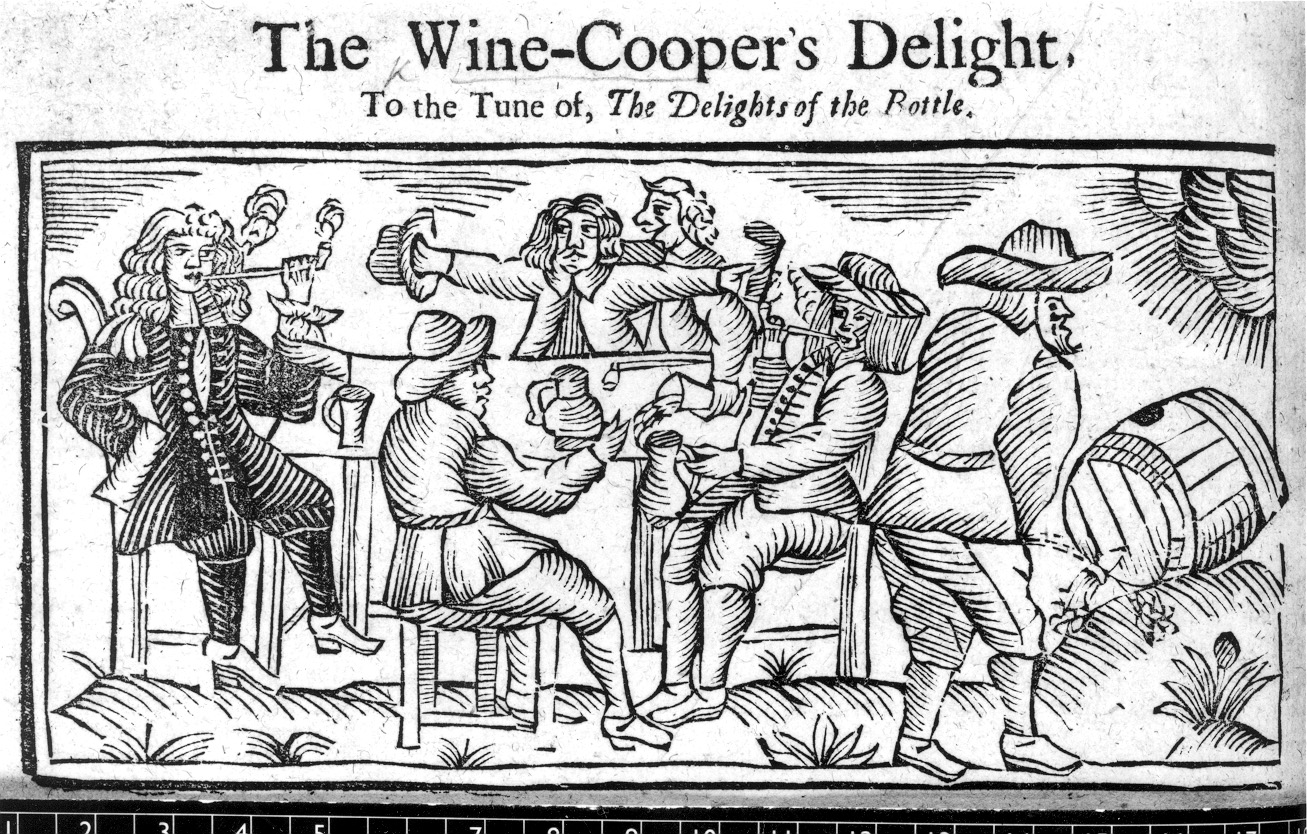This little pamphlet is much sought after by Protestant propagandists looking for solid proof the Jesuits are devil-mongers, and by magicians hoping that these rosary-swinging self-mortifying militant wierdos really have unearthed some earth shattering spells.
Notwithstanding the obvious fakery of the Libellus (the Jesuits weren't even founded until 1534, long after the alleged publication date and barely overlapping the last few months of Agrippa's life), it does have something magical about it, as any Magic User worthy of the name and literate in Latin will find out. And, oddly enough, Clerics can make use of it's contents too...
For a look at the original text, see link below:
Reading it
Anyone literate in Latin can read the Libellus and anyone can carry out the rituals described therein. This will usually do nothing, but 1 in 10 copies will be sufficiently imbued with other-worldly energies to act as a scroll with 1d6 uses, randomly distributed among the spells below. Once used the text remains and it can still be transcribed or used as the basis for spell research, though all further attempts to use the ritual 'out of the book' will fail.
A Magic User will need to use Read Magic to see the underlying spell through the Latin verbiage, but if they do they will cast the spell automatically; if they don't do this they will have to roll a d20, add Intelligence bonus and level and get 10+; Clerics need to roll a d20, adding their level and their Wisdom bonus and getting 10+; Fighters and Specialists roll d20 adding Intelligence, Wisdom, Charisma and Dex bonuses and scoring 20+. Any roll of 1 or below has resulted in an appropriate mishap, as determined by the GM.
Clerics can use the text to research the spells within, costing a mere 20sp per day. Magic Users need only to transcribe the spells as from a scroll to a spellbook.
The Spells
1. The Seven Conjurations
Magic User Level 3; Cleric Level 3
Duration: Instantaneous
Range 10'
These ritual invocations purport to put the caster in control of an evil spirit, embodied 'in a most beautiful, affable, and human form' and 'without causing any harm, without noise, lightning, or tempest, and without fear or trembling' and forcing it to retrieve millions of Spanish gold pieces.
The casting time is a day to prepare the appropriate symbols and documents and will require a bible, a cross, holy water and a blessed dagger that has never tasted blood.
The actual result is however very variable. Anyone thoughtless enough to cast it without using Protection from Evil first is liable to immediate attack from the Demon, and even then it will attack anyone nearby not so protected – best use the 5th level 10' radius version. Sanctuary spells don't hurt either.
The minimum HD of conjured Demon is 4, but for better results higher HD (up to twice the casters level) must be used. The Demon will always take a humanoid form, but will have 1d3 features from the Summon Appendages table and special powers as per the Summon table.
Domination rolls – 1d20 + Cha bonus + level + 1 for Protection from Evil +1 for Sanctuary for the caster then roll 1d20 +HD + number of powers for the demon. The caster can get +1d3 extra for casting it on one of the following Holy Days – Christmas, Easter, the Assumption of the BVM, the Feast of St Peter and St Paul, and All Saint's Day.
-5 or below You are screwed. The demon laughs at your piffling threats of damnation and tries to kill you, your friends, your dog, your horse and might just try and do for everyone in a three mile radius.
-4 to -1 The demon settles for killing anyone outside a Protection from Evil while laughing at the caster. Will teleport the caster closest blood relative or spouse to the spot and marmalise them in front of them. Will attack the caster if he attacks it.
0 to +3 Will demand one human sacrifice and won't do shit until he gets it. Will then act begrudgingly, retrieving 1d100 sp per HD it has, and it will be in the form of any spare gold and silver in the area not actually owned by anyone under a Protection from Evil, so expect a pile of loose change, jewellery, silver hairbrushes etc purloined from the nearest habitation. Caster loses 1 XP per sp of loot gained as it is spiritually 'dirty money'
+3 to +7 Will demand blood sacrifice. Lose 1 HP permanently to get the demon to act. It will bring 2d100 per HD worth of misc gold, silver and gems, purloined from local sources as before and with XP drain as before.
+7 to +11 May demand blood sacrifice (roll casters d20 + Cha bonus, get 10+ to dissuade it), but will return with 4d100 sp worth of loot per HD in the form of perfect fake gold coins of the usual local denomination and a save vs paralysis will halve the XP loss for getting it.
+12 or above The demon actually does it's job retrieving a million sp worth of loot. It will ask politely of the caster if they are sure a lesser sum wouldn't do, but if they insist they insist... The caster loses 1 million XP. If this reduces him to below zero (which it probably will) he collapses into a pile of bones, flesh, gore and gold coins to the value of 1sp per XP he had. His insubstantial spirit, now without material substance, will claw at the money as it fizzles away into the aether. If he has more than a million XP matters proceed as before, though he will have lost quite a few levels.
2. The Jesuit's Discharge
Magic User level 5, Cleric level 4
Duration: Instantaneous
Range: Sight
This spell enables a summoned demon that has got out of control to be dismissed. The caster rolls 1d20 and adds Cha bonus, level and Int or Wisdom bonus, the demon rolls 1d20 plus HD plus 1 per special ability. If the caster wins the demon departs. Sacrifices can help as per the Summon spell, +1 per 2HD, or 1HD if the victims are the same race as the caster. The spell description in the Libellus suggests use of a cross, but this isn't actually necessary. Will not work on any of the Abstract Demons.
3. The Conjuration of Usiel
Magic User level 1, Cleric level 1
Duration: 1d6 rounds per level of the caster
Range: Self
Usiel is the Strength of God, a 'fallen' angel who begat giants upon human women. Invoking him takes a round and temporarily replaces the caster with a self from an alternate universe who became a fighter. This fighter is of equal level to the caster with the same stats (re-roll HP and add Cbt bonus as appropriate, use appropriate saves) but adding 1d6 Str points and removing 1d6 Int. At the end of the spell the caster must save vs Paralysis (as his original class) at +4 or the transformation will be permanent. The new Fighter version of the character may recall an entire alternate history for himself and the world at large.
4. Cyprian's Citation of the Angels
This is no more than a version of Protection from Evil that can be used by a magic user. This spell has no reverse version though, and what qualifies as 'evil' can be a bit capricious. Plenty of 'demons' count as mere 'fallen angels' in the cosmic scheme of things it seems, and plenty of weird alien entities are not 'evil' as such, merely 'hungry', and there are 'angelic' beings who will turn you inside out for fun. Some philosophers suggest asking Koshchei the Deathless, he who created some things as they are, how it all works but few have managed to get such an interview and even fewer have survived it.
5. Cyprian's Conjuration
Magic User level 2, Cleric level 2
Duration: 1d6 rounds per level of caster
Range: 100'
This spell is a fancy version of Speak with Dead that specifically summons a spirit that has hidden a treasure. The spirit will moan pathetically about how boring it is being dead, how ungrateful it's children are, possibly mistake the caster for one of it's greedy offspring and berate him/her for calling it up just to scrounge money etc.
The person must be buried within 100 feet of the casting spot and will be of a level equal to the caster +1d4 -1d4. If the caster knows the name of a specific person he wishes to summon he can use it, but if the person is of higher level than he is the spirit gets a save vs Magic to refuse the summons.
The spirit will have 1d6 HP per level, whatever HP it had in life, AC 12 and will be insubstantial, taking no damage from physical weapons unless they are magical or have been blessed. They will have a Cbt bonus as they had in life, and hits will do 1d3 damage per level and drain 1d100 XP, both halved if a save vs Paralysis is made. If XP is reduced to 0 then the person drops dead of heart attack whatever HP they have left, and if somehow raised from the dead they will be zero-level and will need 1000Xp to be able to go up in levels again.
Spirits of Magic Users and Clerics will be able to to use magic as they could in life, and have a 50% chance per spell slot of having something memorised available.
The spirit will remain for 1d6 rounds per level of caster, but if it becomes angry it can stay for 1d6 rounds per own level.
Once 'slain' as a spirit this spell may not be used on a given individual again, you will have to find the bones and try a Speak with Dead. Spirits may retreat at any time and hide in their mortal remains. They can move through walls and other material objects at 120' a round and gravity has no effect on them. The only thing that can hold them in an 'inverted' version of Protection from Evil 10' radius, and they can escape that with a save vs Magic. Turn Undead will work on a spirit of the Dead, and they cannot walk into full daylight.
Once raised the spirit of the dead must be threatened or cajoled into revealing the location of its loot. Roll 1d20+Cha bonus+Int bonus plus level for the caster, and subtract (1d20 plus Cha bonus plus Wis bonus plus level) for the victim.
-8 or below Spirit of the dead hates you, will attack if equal of greater in level, will retreat if losing.
-3 to -7 Spirit of the dead is uncooperative, will just retreat back into the spirit world when able to. If summoned again take a further -2 from the reaction roll.
-2 to +2 Spirit of the Dead is unimpressed. Make a further argument as to why you should have their well hidden loot for a re roll. Fighting the spirit down to half HP or less is a good argument.
+3 to +7 Will state the nature OR the location of the loot. This may be followed up by the caster with a Locate Object spell, if within range of such.
+8 to +11 Will state location and nature of loot and maybe a hint or two as to how to look.
+12 or above Will actually warn of any traps, tricks or hazards involved in recovery of treasure.
The amount of loot available will vary considerably. In most cases there will be very little. People in Christian Europe are rarely buried with grave goods and most of their chattels are given to their heirs via wills. The Magic User may go through this rigmarole, fight a spirit of the dead, and then find that the 'treasure' is a gold pin that fell between the cracks in the floorboards in their long demolished house.
6. Cyprian's Dismissal
Magic User Level 3, Cleric Level 3
Duration: Instantaneous
Range: Sight
Similar to the Jesuit's Discharge but works on undead instead of demons. Will only work on one undead at a time, and if the undead has a higher level than the caster then it will get a save vs Magic. Sacrifices will not help, but the undead will be instantly destroyed. If the spell fails then the undead will target the caster exclusively until he is dead.

Further uses of the book
Magic Users can use the book as research material, halving the time they need to research the standard Summon, Locate Object and Speak with Dead spells. Clerics can research Clerical versions of these same MU spells at half time and cost.
Magic Users can also research the standard Clerical Turn Undead and Heroism spells as MU spells of one level higher at half cost.
Obtaining the book
It is possible to purchase this book from esoteric booksellers at 800sp (or £40 in English money), old dogeared copies from the one and only print edition made in 1572. You might be lucky enough to find it, or a few pages from it, in a bundle of old pamphlets or books sold as a job lot. There is a copy rumoured to be held in a Fellow's private library in Cambridge University and Edmund Campion, hung drawn and quartered for being a Jesuit in 1581, was said to have been found with a copy which ended up in the now scattered collection of Dr John Dee.















